Vermont is strict about its flags
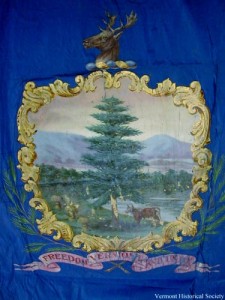
How now red cow? That question could be a common reaction to the Vermont state flag. Vermont is marking the 225th anniversary of its entry, on March 4, 1791, into the U. S. As the 14th state, it was the first to join the Union after the original 13 colonies.
State Flag
The first official Vermont flag, chosen in 1862, consisted of 13 stripes, alternating red and white, and a blue square in the upper left. Inside the square were one large star and the state’s coat of arms.
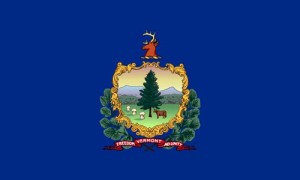
In 1923, the current Vermont state flag was chosen, using a design that dates back to the Revolutionary War, when it was a banner carried by troops. The coat of arms was moved to the center of the solidly blue flag with “Vermont” written on a scroll.
According to www.vermonthistory.org, “the coat of arms has many symbols that represent Vermont. It has mountains and a red cow. There are trees, including a pine tree in the middle. Three sheaves of grain stand on a green field.” Atop the seal is a deer’s head. On the bottom is the state motto, “Freedom and Unity” and two pine branches.
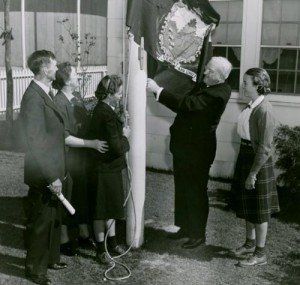
Vermont is so careful about its flag that a law designates how it’s to be disseminated. According to Title 1, Chapter 11 and paragraph 496 of the state’s statutes, “The Secretary of State shall, through the Department of Buildings and General Services, obtain State Flags….He or she may, in his or her discretion and on such terms as he or she finds appropriate, distribute said State Flags to other states, to State officials, departments, and agencies, and to such other persons as he or she may determine should have them in the interest of the State.”
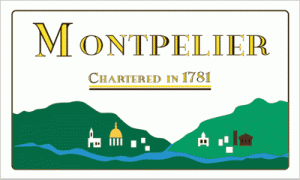
Municipal Flag
The state capital, Montpelier, has its own flag, which presents an idyllic image of the town. At the top are the words: “Montpelier, Chartered in 1781.” Below that phrase is a cartoon-like drawing of the city.
The image includes mountains, which, of course, are green since Vermont is the Green Mountain State. Dotted along the hills are images of churches, the statehouse, a silo and rectangles representing homes.
The city flag, designed by Linda Mirabile, originated as an image for welcome signs to Montpelier. In 2000, her work was adopted as the official city flag.
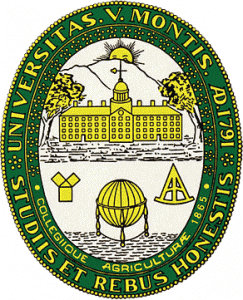
College Flag
Located in Burlington, the University of Vermont is also marking its 225th anniversary. Only Harvard, Yale, Dartmouth and Brown predate the college in New England. U of V proudly notes that it was the “first university to admit women and African-Americans into the Phi Beta Kappa honor society.”
Like the capital, the university salutes the state’s nickname by using “Universitas Viridis Montis” as its motto. That means “University of the Green Mountains.”
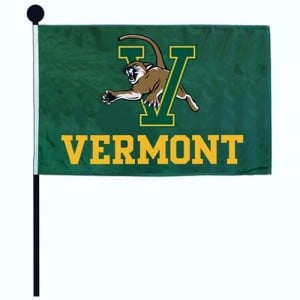
Like the state, U of V has a detailed and strict policy regarding its own flag and other banners, declaring, “The flying of flags representing an entity other than the United States of America, the State of Vermont, or the University of Vermont as a whole shall be restricted to designated campus special event flagpoles and governed by the procedures for approval outlined hereunder.”
The college flag consists of a large V through which a catamount steps. It’s the nickname of the sports teams. Much more elaborate is the university seal, which dates to 1807. Showing the university and images of learning, the seal includes a Latin motto: “For virtuous studies and matters.”
